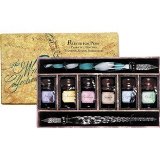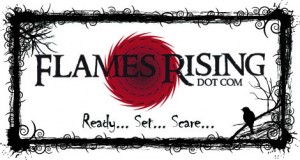 One of the things that I’ve discovered, is that if you overload yourself on the business of writing and the essentials of everyday life, your writing can be affected in ways that you don’t even realize. I find that this is especially true if you “rush” toward a deadline.
One of the things that I’ve discovered, is that if you overload yourself on the business of writing and the essentials of everyday life, your writing can be affected in ways that you don’t even realize. I find that this is especially true if you “rush” toward a deadline.
If you find you’re not enjoying your writing anymore, or if you realize that your writing has become crunchy and mechanical, I recommend putting away your keyboard and picking up a physical pen instead. Sometimes, all it takes to create a great story, is to channel the writers of old by getting back to the basics of writing implementation. Sometimes, all you need is a great pen, a journal or an old typewriter and some fancy paper to remind yourself that writing is not just about typing away on your computer. Often, the way we put the words down on the page can have as big of an impact on us as what we’re writing.
How do I break away from the computer while I’m on deadline? I’ve found some great writing implements and other creative tools that I use to help me focus.
 I picked up this glass pen and ink set at a renaissance faire. The glass pen can also be found underneath a special name, as a Murano glass pen. What’s neat about this set is that it’s pretty inexpensive yet you get two glass pens and six inkwells of various colors. I’ve had a lot of fun with lettering using my set, too.
I picked up this glass pen and ink set at a renaissance faire. The glass pen can also be found underneath a special name, as a Murano glass pen. What’s neat about this set is that it’s pretty inexpensive yet you get two glass pens and six inkwells of various colors. I’ve had a lot of fun with lettering using my set, too.
I find that it’s essential to have on hand an excellent box of paper for all manner of correspondence. My box is a stack of #24 pound, white linen paper with matching envelopes. They weren’t cheap (good paper never is) but it’s an investment that I don’t regret. When I’m offering writing submissions through print, I typically print out my cover letter on my fancy paper then opt for plain, white paper for the actual story or article. You can typically find a really nice box of paper through your local printing company, or you can go to an office supply store. Expect to spend about seventy-five dollars for the set.
 I’ve mentioned the products that Dover Publications offers before, in my review of five copyright-free clipart and photo sites. Through Amazon, you can get the books discounted at a great price, and you can sign up for free art samples from Dover directly. I really enjoy this particular book because I can use the ornate letters in various writing projects for that extra touch. The ornate alphabets range from medieval lettering (i.e. what you might find in projects for illumination) to Victorian-era replete with scrollwork and ivy. Why not make your own stationery for your business letters and correspondence? When was the last time you sent a hand-written note?
I’ve mentioned the products that Dover Publications offers before, in my review of five copyright-free clipart and photo sites. Through Amazon, you can get the books discounted at a great price, and you can sign up for free art samples from Dover directly. I really enjoy this particular book because I can use the ornate letters in various writing projects for that extra touch. The ornate alphabets range from medieval lettering (i.e. what you might find in projects for illumination) to Victorian-era replete with scrollwork and ivy. Why not make your own stationery for your business letters and correspondence? When was the last time you sent a hand-written note?
Last but not least I’d like to mention some of the journals I’ve used over the years. Every journal I own has a history to it, either I’ve received one as a gift or I’ve picked one up for a special occasion. One of my favorite types of journals to get are the ones with a magnetic flap on the front. Although it takes a little getting used to, the flap is nice because you don’t have to worry about the journal’s pages opening. I’ve seen many fellow writers taking a journal with them everywhere to write ideas down, and this is a practice I need to do more often.
Hope these ideas have inspired you. If you have any to share, let me know!


 One of the things that I’ve discovered, is that if you overload yourself on the business of writing and the essentials of everyday life, your writing can be affected in ways that you don’t even realize. I find that this is especially true if you “rush” toward a deadline.
One of the things that I’ve discovered, is that if you overload yourself on the business of writing and the essentials of everyday life, your writing can be affected in ways that you don’t even realize. I find that this is especially true if you “rush” toward a deadline. 
